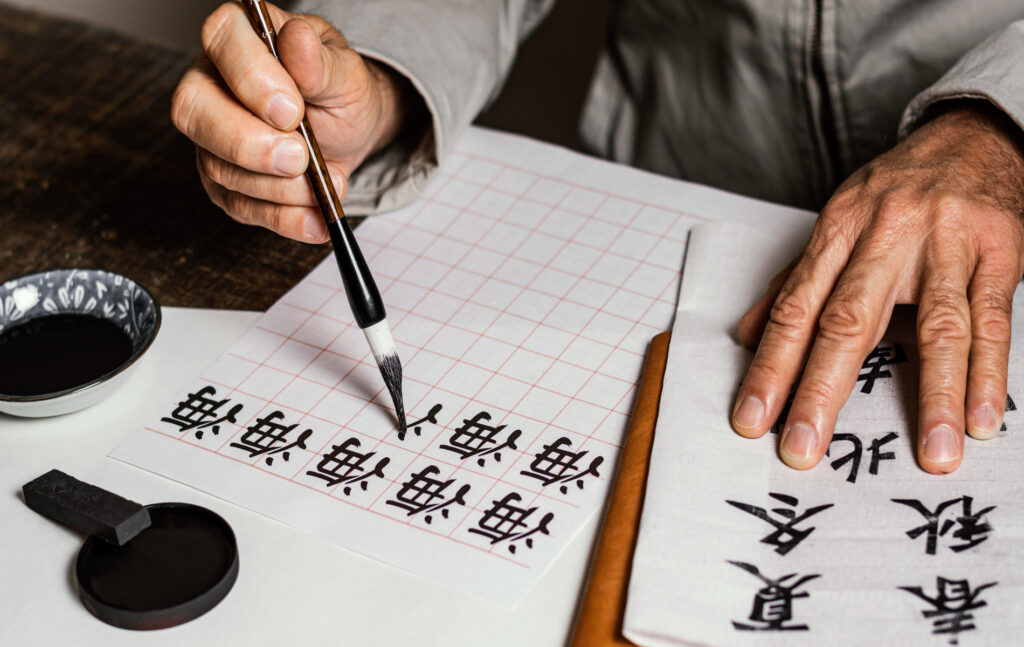What are Japanese language writing Systems?
Table of Contents
Toggle
The Japanese language, with its rich history and intricate structure, presents a fascinating yet challenging experience for learners. Its writing systems are a testament to this complexity, featuring a unique blend of characters that represent sounds, syllables, and ideas. Understanding these writing systems is crucial for anyone seeking to master Japanese, as it forms the foundation of the language’s communication and literature. Each system—Hiragana, Katakana, Kanji, and Romaji—plays a distinct role in how Japanese is written and read, contributing to the language’s depth and versatility. This article will delve into each of these systems, offering a comprehensive guide to their usage and significance.
1. Hiragana
Hiragana is the fundamental syllabary of the Japanese writing system, often the first script that learners encounter. It originated from simplified Chinese characters and was standardized in the Heian period. Hiragana consists of 46 basic characters, each representing a specific sound. These characters are used to write native Japanese words and grammatical elements. For instance, the Hiragana character あ (a) represents the sound “a,” while い (i) corresponds to “i.” Hiragana is indispensable in daily writing, seen in everything from children’s books to official documents. It serves as the building blocks of the language, enabling writers to spell out words phonetically and providing the grammatical glue that holds sentences together.
2. Katakana
Katakana, another essential component of Japanese writing, shares a similar origin story with Hiragana but serves a different purpose. Developed during the same period, Katakana characters are angular and more straightforward compared to the flowing strokes of Hiragana. There are also 46 basic Katakana characters, each mirroring a sound that corresponds with those in Hiragana. However, Katakana is primarily used for foreign words, technical terms, and onomatopoeia. For example, the word “television” in Japanese is written as テレビ (terebi) using Katakana. This script plays a crucial role in modern Japanese, adapting new concepts and terms from other languages, thus making it an essential tool for expressing contemporary ideas.
3. Kanji
Kanji represents the most complex and nuanced aspect of Japanese writing. Borrowed from Chinese, Kanji characters are logographic, meaning each symbol represents a word or idea rather than a sound. The history of Kanji in Japan dates back to the 5th century, and over the centuries, thousands of characters have been adopted. Each Kanji character carries its own meaning and can be combined to create new words and concepts. For example, the Kanji 木 (ki) means “tree,” while 林 (hayashi) combines two tree characters to mean “grove.” Learning Kanji is often seen as the most challenging part of mastering Japanese, due to the sheer number of characters and the complexity of their meanings. However, it also adds a rich, symbolic layer to the language, offering depth and precision that phonetic scripts alone cannot achieve.
4. Romaji
Romaji refers to the representation of Japanese sounds using the Latin alphabet. Its primary purpose is to help non-Japanese speakers learn pronunciation and understand the language without needing to immediately learn the native scripts. Romaji is often used in language textbooks, street signs, and technology interfaces. However, it differs significantly from traditional Japanese writing systems, as it doesn’t convey the nuances of Hiragana, Katakana, and Kanji. While Romaji can be a helpful learning tool, relying solely on it can be limiting. Critics argue that overuse of Romaji can hinder the deeper understanding and fluency of Japanese, as it lacks the cultural and contextual richness of the native scripts.
Conclusion
Understanding the different Japanese writing systems is essential for anyone serious about learning the language. Each script—Hiragana, Katakana, Kanji, and Romaji—offers unique insights into Japanese culture and communication. For beginners, starting with Hiragana and Katakana provides a solid foundation, while gradually introducing Kanji can enrich their understanding. Utilizing resources such as language apps, textbooks, and practicing with native speakers can accelerate the learning process. Embracing the challenge of these writing systems not only enhances language skills but also opens up a deeper appreciation for Japan’s literary and cultural heritage. With dedication and the right tools, mastering Japanese writing can be an achievable and rewarding goal.
